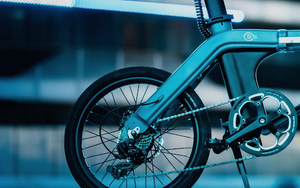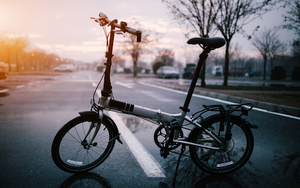Why Does My Electric Scooter Turn On But Not Move? Troubleshooting Help
Nov 16, 2023
List of Contents
- Why does my electric scooter turn on but not move?
- Understanding the basics of electric scooter operation
- Common reasons why your electric scooter may not move
- Step-by-step troubleshooting guide for electric scooters
- Preventative measures to avoid mobility issues
- When to seek professional help
Why Does My Electric Scooter Turn On But Not Move? Troubleshooting Help
If you're experiencing the frustrating situation of your electric scooter turning on but not moving, don't fret. This article will provide you with troubleshooting help to identify and fix the issue. Electric scooters have become increasingly popular as a convenient and eco-friendly mode of transportation. However, like any other vehicle, they can encounter problems that require troubleshooting and repair.
Understanding the Basics of Electric Scooter Operation
Before we delve into troubleshooting, let's briefly understand how electric scooters work. Electric scooters are powered by a combination of a battery, motor, and controller. When you turn on the scooter, the battery supplies power to the motor through the controller. The motor then converts the electrical energy into mechanical energy, propelling the scooter forward. Any issue with these components can result in the scooter not moving despite being turned on.
The Role of the Battery in Scooter Mobility
The battery is the heart of your electric scooter, providing the necessary electrical energy. Over time, batteries can degrade or fail, affecting the scooter's performance. If your scooter turns on but doesn't move, the first component to inspect is the battery. Check if the battery is properly connected and fully charged. Low battery voltage can prevent the motor from receiving enough power to move the scooter.
Furthermore, it's important to understand the different types of batteries used in electric scooters. The most common types are lead-acid batteries and lithium-ion batteries. Lead-acid batteries are cheaper but heavier, while lithium-ion batteries are lighter and have a longer lifespan. Understanding the type of battery your scooter uses can help you make informed decisions when it comes to maintenance and replacement.

Importance of the Motor in Electric Scooters
The motor is responsible for converting electrical energy into mechanical energy. If your scooter turns on but doesn't move, the motor could be the culprit. Motor problems can arise due to loose connections, damaged wires, or worn-out brushes. Inspecting the motor for any visible damage or unusual sounds can help identify potential issues.
It's worth noting that electric scooter motors come in different types, such as brushed and brushless motors. Brushed motors have physical brushes that make contact with the commutator, while brushless motors use magnets to generate motion. Brushless motors, a feature of the Kugoo G2 Pro Electric Scooter, are generally more efficient and require less maintenance compared to brushed motors. Understanding the type of motor your scooter has can assist you in troubleshooting and finding appropriate solutions.
In addition, the motor's power rating plays a significant role in the scooter's performance. Higher power ratings result in increased speed and torque, allowing the scooter to tackle inclines and uneven terrain more effectively. The Nanrobot Lightning 2.0 Electric Scooter can reach speeds of 30mph and has dual 800W motors. However, it's important to consider the legal limits and regulations regarding motor power in your area to ensure compliance.

Common Reasons Why Your Electric Scooter May Not Move
Now that we have a basic understanding of electric scooter operation, let's explore some common reasons why your scooter might not move.
Battery-Related Issues
One common issue is a depleted or faulty battery. Electric scooter batteries have a limited lifespan and can lose capacity over time. If your scooter's battery is old or has been exposed to extreme temperatures, it may not hold a charge effectively. Replace the battery if necessary to regain full scooter mobility.
Motor Problems
If the motor is not functioning correctly, your scooter may not move. Motor issues can stem from a variety of causes, such as damaged wiring, lack of lubrication, or worn-out brushes. Consult the scooter's user manual or seek professional assistance to diagnose and resolve motor-related problems.
Controller Malfunctions
The controller regulates the flow of electrical energy from the battery to the motor. A malfunctioning controller can disrupt the electrical circuit and prevent your scooter from moving. Check if the controller is securely connected and inspect it for any visible signs of damage. If necessary, replace the controller or seek professional help for repairs.
Step-by-Step Troubleshooting Guide for Electric Scooters
If your electric scooter turns on but doesn't move, follow these steps to troubleshoot the issue:
Checking the Battery
Begin by ensuring that the battery is properly connected and charged. Use a voltmeter to measure the battery voltage and compare it to the manufacturer's specifications. If the voltage is below the recommended range, consider replacing the battery.
Inspecting the Motor
Next, inspect the motor for any visible damage or loose connections. Look for worn-out brushes or signs of overheating. Lubricate the motor if necessary, following the manufacturer's recommendations. If you're uncertain about motor-related issues, consult the user manual or seek professional assistance.
Evaluating the Controller
Finally, evaluate the controller for any signs of damage or loose connections. Ensure that the controller is securely connected to both the battery and the motor. If you suspect a controller malfunction, consider replacing it or consulting a professional for further diagnosis and repair.

Preventive Measures to Avoid Mobility Issues
Prevention is always better than cure. To avoid mobility issues with your electric scooter, follow these preventive measures:
Regular Maintenance Tips for Electric Scooters
Perform regular maintenance on your electric scooter to keep it in optimal condition. This includes checking the battery's charge, cleaning the scooter, inspecting the wiring, and lubricating moving parts. Consult the user manual for specific maintenance instructions.
Proper Usage and Handling of Electric Scooters
Use your electric scooter responsibly and avoid overloading it with excessive weight. Rough handling or excessive strain can lead to motor or controller failures. Follow traffic rules and avoid riding on uneven surfaces that may damage the scooter's components.
When to Seek Professional Help
While some scooter issues can be resolved through troubleshooting, certain problems may require professional assistance.
Identifying Serious Electric Scooter Problems
If your troubleshooting efforts do not resolve the issue, it may indicate a more complex problem. For example, a faulty wiring harness or a damaged motor controller may necessitate professional intervention. Continuing to use a scooter with serious issues can lead to further damage or safety hazards. It is predicted that over 335 fires associated with faulty e-bikes and electric scooters will occur this year, making it important to keep on top of any issues.
Finding a Reliable Scooter Repair Service
If you're unable to diagnose or fix the problem yourself, seek out a reliable scooter repair service. Look for experienced technicians with knowledge of electric scooters. Ask for recommendations from fellow scooter owners or consult online forums and reviews to find a trustworthy repair service.

Remember, with proper troubleshooting and maintenance, you can keep your electric scooter in excellent working condition and ensure a smooth and enjoyable ride. Regularly inspect your scooter's battery, motor, and controller, and address any issues promptly to avoid the frustration of a scooter that turns on but doesn't move.






